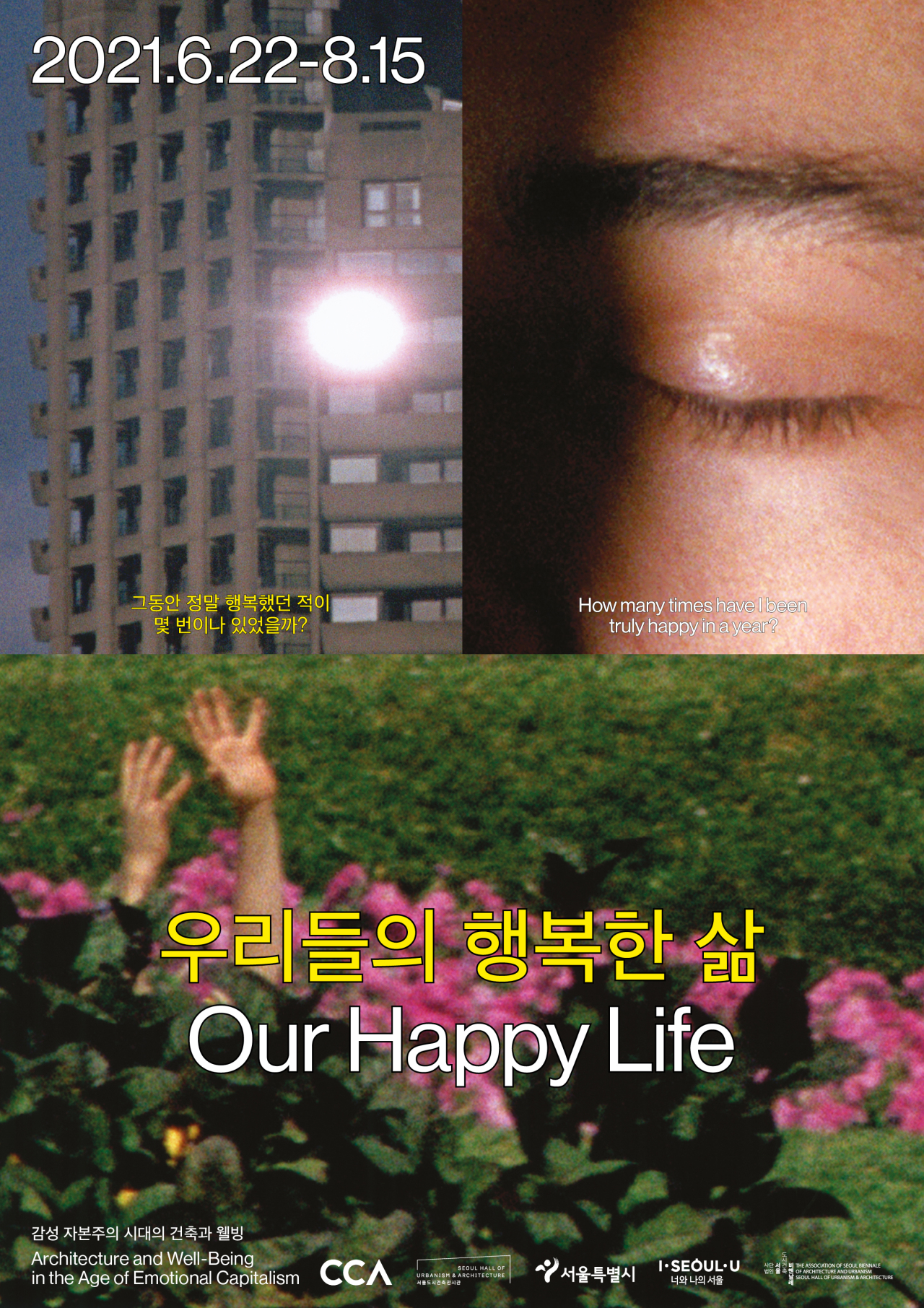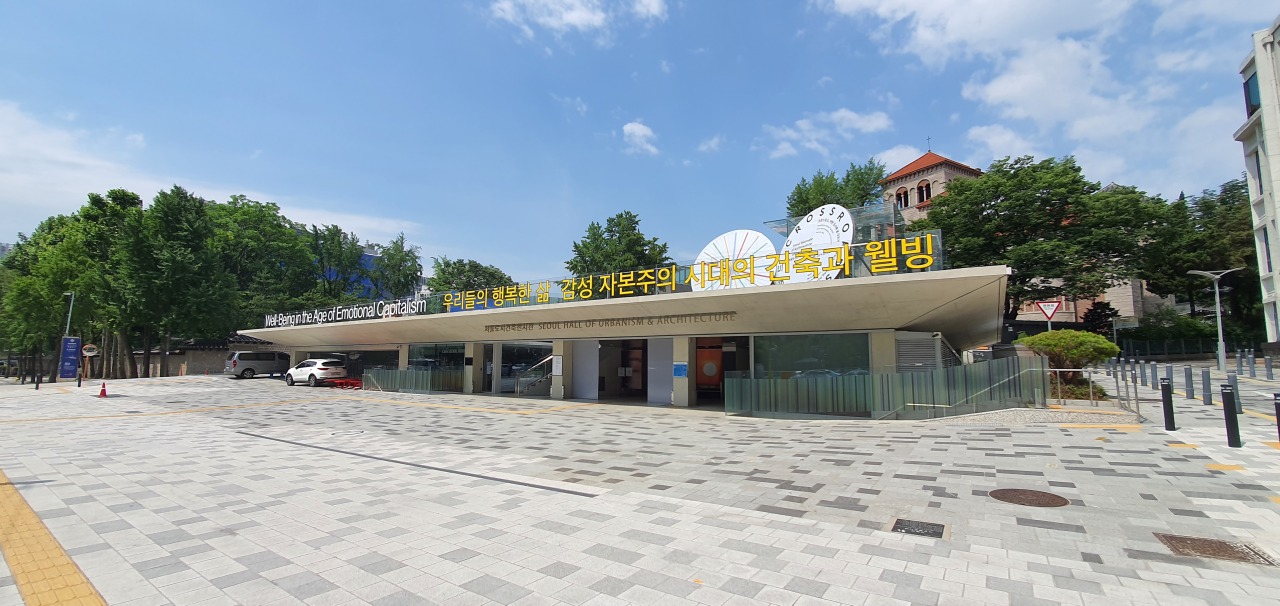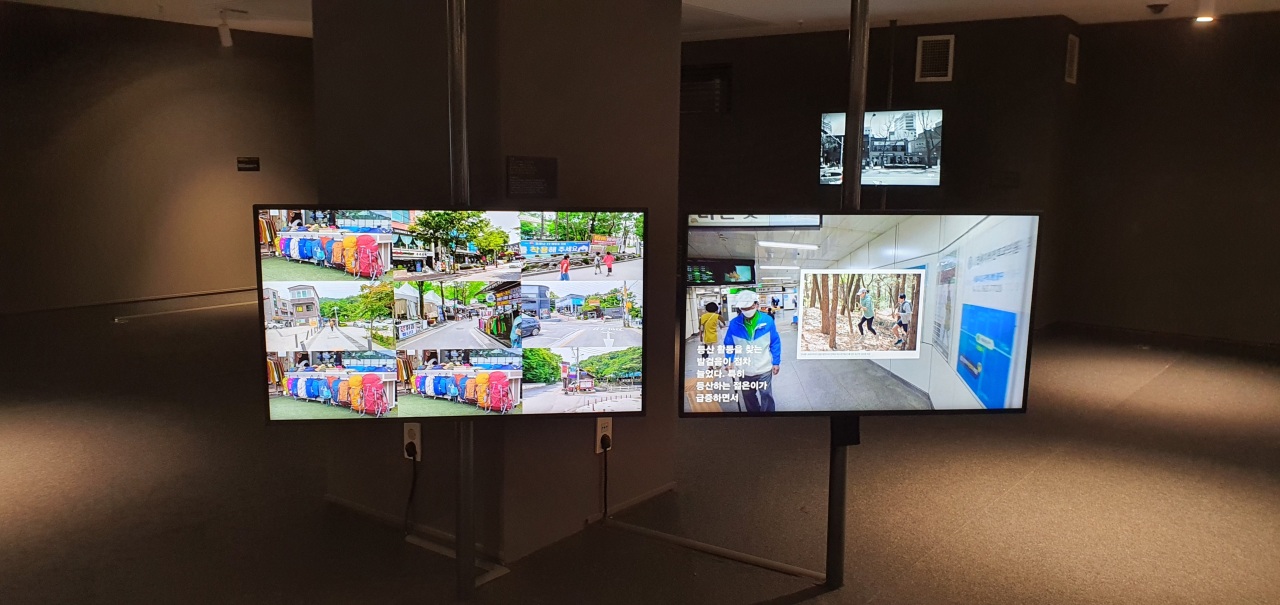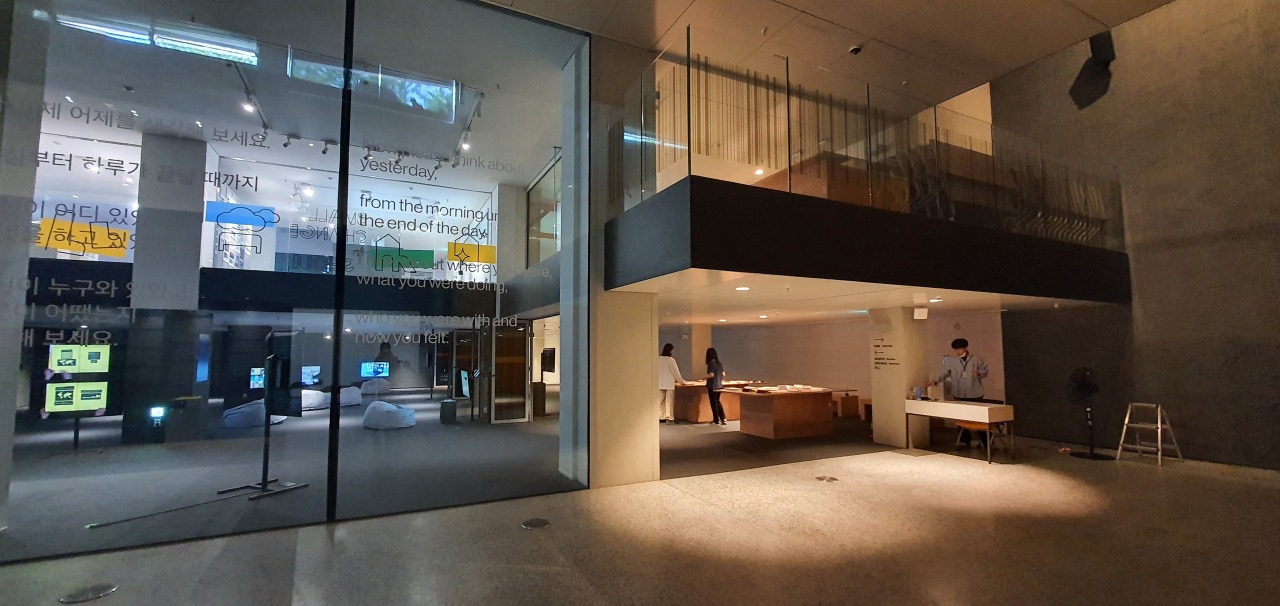 |
Poster for “Our Happy Life” (Seoul Hall of Urbanism and Architecture) |
“Did you experience happiness during most of the day yesterday?”
A video pops up with a self-reflective question the moment you enter a room with yellow fabric curtains at the exhibit‘s entrance. The special documentary clip from global survey firm Gallup shows how measuring the concept of happiness -- an invisible emotion -- has become possible today.
“Our Happy Life” is an exhibition initially launched in Montreal by the Canadian Center for Architecture that opened Tuesday at the Seoul Hall of Urbanism and Architecture. As the first international exchange exhibition with the CCA, the Seoul exhibition is re-created within a South Korean context.
Under the theme “Architecture and well-being in the age of emotional capitalism,” the exhibit shows how the design of a city’s artificial environment has both direct and indirect influence on individuals‘ emotions. According to the 2021 World Happiness Report, a publication of the United Nations Sustainable Development Solutions Network, South Korea ranked No. 50 out of 95 countries in the 2020 World Happiness Index.
 |
Main entrance to the Seoul Hall of Urbanism and Architecture (Kim Hae-yeon/The Korea Herald) |
“The exhibition has a strong significance in the location alone, since this hall lies at the heart of city center, near the palace Deoksugung and City Hall,” Kim Hyo-eun, a senior curator for the Association of Seoul Biennale of Architecture and Urbanism, told The Korea Herald. “Architectures and city landscapes seem a complicated term, but if you think of ’home,‘ that’s where the story of happiness begins, and becomes part of the urbanscape itself.” Kim said that the organization has been working with the CCA for the last 7seven months on the Seoul exhibition, regularly holding online video meetings each week with experts and curators.
The exhibition is divided into four parts: Definition of Happiness, Statistics and Data, City scenes and City and Well-being.
The Definition of Happiness section demonstrates how the context of “being happy” has varied by country since the 2008 global financial crisis. Visitors can look into the history of governments, cities and businesses that take into account happiness as a key factor in citizens‘ lives, citing Bhutan and Denmark as examples.
 |
Installation view of “Our Happy Life,” at the Seoul Hall of Urbanism and Architecture (Kim Hae-yeon/The Korea Herald) |
The Statistics and Data section examines in detail scientific measures and studies of happiness from the past to present. Books and related global archives of the World Happiness Report are available at the exhibition. Measured each year by the Gallup World Poll and written by a group of independent experts acting in their personal capacities, the changing statistics and data gathering measurements are noticeable, with a different theme each year.
In City Scenes, Belgian architect Dirk Somers takes the stage to analyze the data in global reports, presenting eight collages that capture scenes of an ideal and happy life in the city. Windows are embedded in each collage, inviting the audience to look on from the perspective of those at home or work. Overlooking the windows are scenes of families resting and on picnics and kids bicycling and dancing in streets, implying that moments of relaxation and pleasure are just a step away in an ideal city, for anyone to hop in at any moment.
 |
Installation view of “Our Happy Life,” at the Seoul Hall of Urbanism and Architecture (Kim Hae-yeon/The Korea Herald) |
City and Well-Being focuses on the city of Seoul. The research conducted by the Society of Architecture shows how Seoul‘s urban structure impacts city dwellers‘ lives. Photos taken in detail of the different objects that connect and communicate with people in Seoul, such as mountains, online platforms, cafes and apartments, give visitors the chance to look closely at the shapes and mechanisms of urban structures that we take for granted.
“When we think of happiness in this country, it’s easy to associate with values such as wealth, social status, and your family situation. After looking at the exhibit with friends, I understand that being happy is not such a complicated process after all, but how you lived yesterday and how you will live today,” Kim Han-ju, a college senior visiting the exhibition, told The Korea Herald.
Reservations are required for admission to the exhibition, which will run through Aug. 15. Reservations can be made at the Seoul Hall of Urbanism and Architecture’s website.
By Kim Hae-yeon (
hykim@heraldcorp.com)







![[Weekender] Korea's traditional sauce culture gains global recognition](http://res.heraldm.com/phpwas/restmb_idxmake.php?idx=644&simg=/content/image/2024/11/21/20241121050153_0.jpg)



